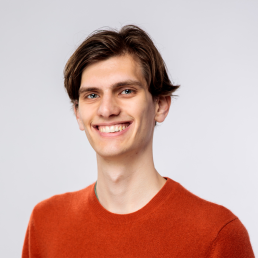Professional Identity and Vision
I envision the role of a designer as one that is empathic and responsible. Our interactions with the products and technologies can have a tremendous impact on daily life: design has the ability to motivate people, offer new perspectives and influence behaviour. It is a remarkable quality of design which we must treat with care.
My vision
I am driven by creating interactive experiences that spark delight. Experiences can have a profound emotional impact on people, whether it is surprising, frustrating or fun. Through this, I see targeting curiosity and intrinsic motivation as a tool to create a positive impact. One area where this can be applied is education: kids often complain about school being boring. Not understanding why you are learning something and being forced to sit still doing it is not an inspiring environment. When learning is fun and triggers the user’s interests, rather than a forced activity it is much more effective and energizing. Not just children can benefit from this: anyone can grow beyond themselves: explore to know more about who they are, learn about new things, becoming more healthy and happy. And this does not all have to be life-changing events: even the smaller things that make someone’s day a little brighter, more intriguing or enjoyable are worth creating.

As designers, we are often creating bridges between people and technology. Having a positive connection with these technologies or products has a significant effect on how we treat them: if they are things we cherish and want in our lives, or despise and want rid of. Besides the impact on a specific individual, there is always an ecosystem around it that should be considered. How does our design impact our relationship with others – humans, but also systems, animals, products or the environment?
Design should be for everyone, and impact can only be created when it’s accessible and inclusive. People all over the world are becoming increasingly connected, and design can allow people to interact in a way that’s not decided by one’s skills, language or status. Through interdisciplinary collaboration and empowering inclusive design practices, we can create wholesome and sustainable relations between people and the things they interact with.
Professional identity
I am often driven by curiosity: looking at the what if’s and experimenting with the unviable, weird and unrealistic to reach places to find something new. As a kid, I played a Sesame Street computer game that made me try reading before even properly learning it in school. Just through its captivation and being driven by curiosity I learned a lot without feeling bored or forced to do so at all. Using this natural curiosity of people is also something I like to design for and it shapes a more personal connection between a design and its users.
To achieve my vision of creating memorable and enjoyable experiences and using my creations to show this vision, I wanted to become an expert in independently producing fully featured game prototypes. The skills I developed to reach this include shaping artistic vision with a consistent and appealing style and creating my own assets such as textures, original music and user interface. Secondly, there are large technical requirements: scripting gameplay in languages such as C# in an extensible and maintainable manner to write code that lasts for future adaptations or collaborations. Finally, the game design: such as the intended experience, core loops and mechanics.
With a background working in diverse teams from small independent projects to large corporations, I have built my competency around playful design through the process of creation and shaping harmonious collaboration. I find the intersections between art, technology, and people to be a very interesting area and enjoy a hands-on approach together with other creators or users where making things is used to drive the design process forward or get new insights.
I like to bring people together and work in multi-disciplinary teams. I feel the most beautiful things happen when people feel comfortable expressing themselves. People can work together to amplify each other’s ideas, bring out their best qualities and shine their light on things from multiple perspectives. For this to happen, an open environment with creative freedom is needed where nobody feels afraid to let their voice be heard.
I aspire to advocate for well-being and wholesome game design and apply it to areas such as education, health and entertainment. I care about visioning and direction, but feel a lot of power is in executing and teamwork. Being flexible and adapting to needs and insights is a good way to find the true value or fun. In this, I like to keep an open, critical but positive mindset.